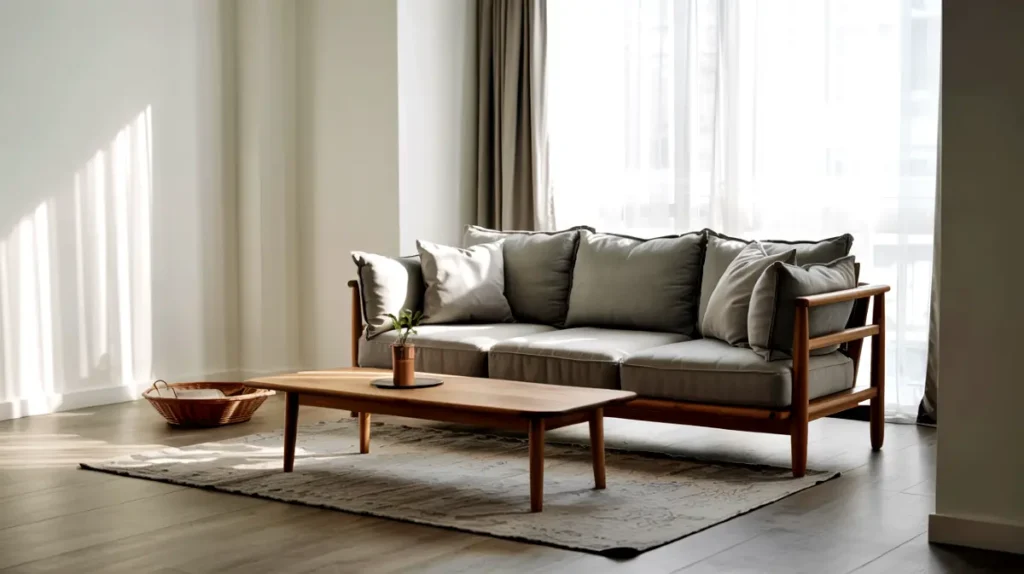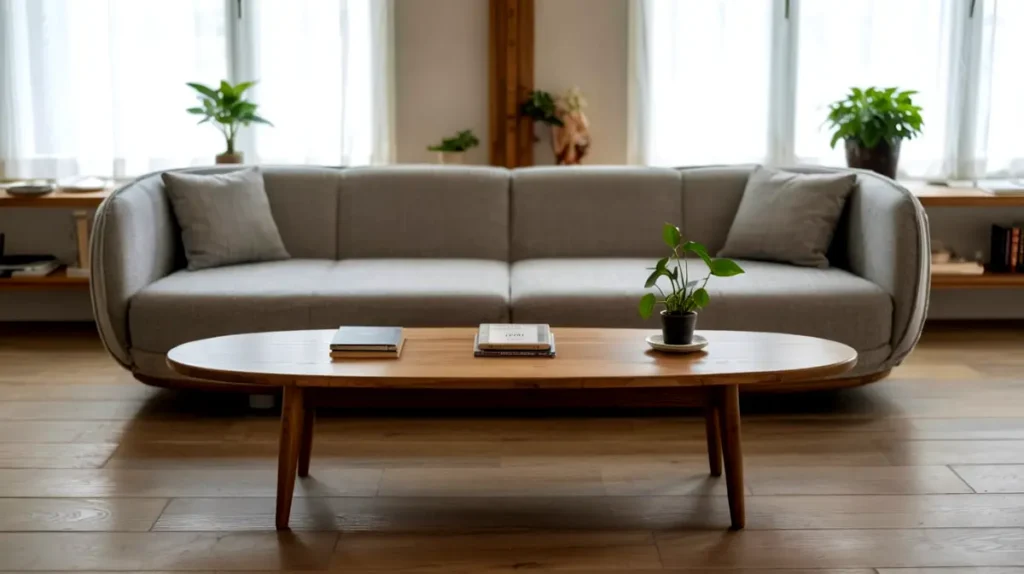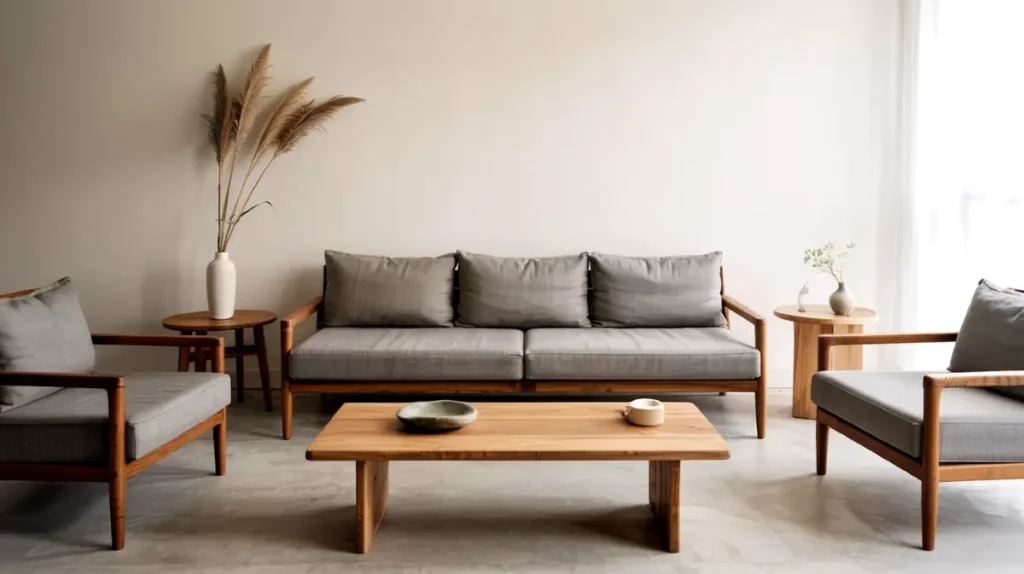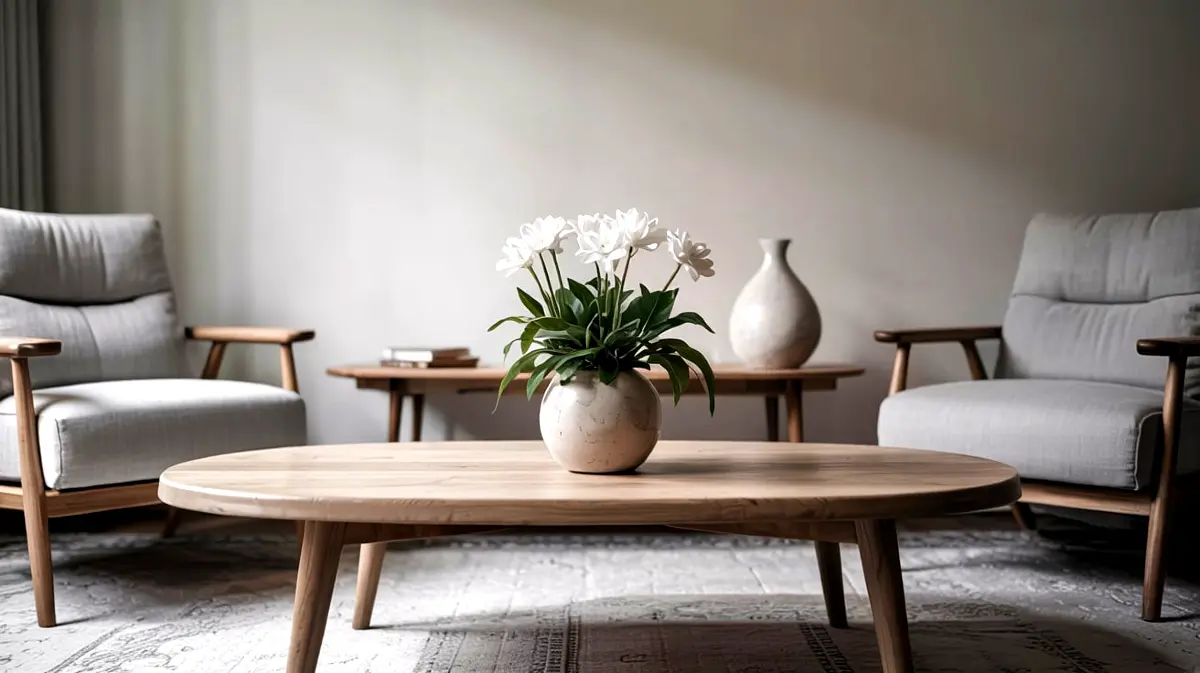In a world of fast furniture and disposable decor, a design revolution is quietly taking hold.
Japandi, the thoughtful fusion of Japanese and Scandinavian aesthetics, offers a refreshing antidote to consumption-driven interior design, proving that style and sustainability can coexist beautifully.
This hybrid approach isn’t just about creating Instagram-worthy spaces—it’s a practical philosophy that makes high-end design accessible to budget-conscious homeowners.
By embracing minimalism, natural materials, and intentional choices, Japandi demonstrates that less truly can be more, both for your wallet and your well-being.
The Essence of Japandi Design
Japandi Style brings together Japanese minimalism and Scandinavian design, creating spaces that prioritize both form and function.
This interior style centers on clean lines, natural materials, and a connection to the outdoors.
At its foundation, Japandi incorporates four key elements: simplified spaces with intentional design choices, practical furniture that serves multiple purposes, sustainable materials that respect the environment, and natural color palettes like wood and plants.
The results are spaces that promote calm and balance while remaining budget-conscious.
By focusing on quality over quantity and reducing excess, Japandi offers an approach to home design that’s both mindful and practical.

Choosing a Japandi Color Palette
Start with soft whites, off-whites, and light grays as base colors for walls and major furniture pieces.
These Japandi color choices create a serene foundation that reflects the style’s minimalist roots.
Add warmth through natural earth tones like pale browns, sage green, and muted blues.
For visual interest, incorporate black or charcoal accents sparingly on smaller items or artwork.
To maintain a budget-friendly approach, consider painting projects you can complete yourself.
Layer different textures in similar neutral shades through textiles and natural materials to build depth without straying from the color scheme.
Budget-Friendly Furniture Selection
Second-hand stores often yield furniture pieces that match Japandi Style clean lines and natural materials.
Look for wooden tables, chairs, and storage units that show simple design elements.
Consider items that serve multiple roles, such as storage benches or fold-out desks, to make the most of your space.
Old furniture can take on new life with minor updates.
Sand and restain wooden pieces in light tones, or paint metal items in neutral colors.
Replace outdated hardware with simple black or brass pulls.
The key is selecting pieces with straightforward shapes that support both practical needs and visual simplicity.

Incorporating Natural Materials
Natural and sustainable options like bamboo, reclaimed wood, and rattan stand out as practical choices for Japandi Style furniture and decor.
These materials come with lower price tags while maintaining the style’s organic feel.
Create your own wooden shelves using basic lumber, or fashion plant holders from rattan cord – both projects require minimal tools and materials.
Plants play a central role in Japandi spaces.
Add low-maintenance greenery such as snake plants or pothos to bring life to rooms.
Position them in handmade ceramic pots or natural baskets to strengthen the connection between indoor spaces and nature while maintaining the style’s understated character.
Decluttering to Embrace Minimalism
Creating a Japandi-inspired space starts with removing unnecessary items.
Begin by sorting belongings into clear categories: keep, donate, or discard.
Apply a practical “one in, one out” approach when bringing new items home to maintain minimal spaces.
Store essential items in natural fiber baskets or simple wooden boxes that match the Japandi aesthetic.
Position frequently used objects where they’re easy to reach, while tucking seasonal items away in closed storage.
Keep surfaces clear except for purposeful items like a ceramic vase or bamboo tray.
This organized approach supports daily function while maintaining the calm, uncluttered environment central to Japandi design.
DIY Decor Projects
Create simple line drawings or geometric patterns using basic art supplies like canvas and black paint to match Japandi Style principles.
Paint circles, arcs, or straight lines in black on white backgrounds for striking wall art that fits the style.
Bring nature indoors by gathering stones, branches, and dried flowers.
Arrange these items in clear glass containers or lay flat branches on walls as organic art pieces.
Turn everyday items into Japandi-style decor by painting glass jars in matte neutral colors for vases or candle holders.
Group items in odd numbers and maintain clean lines to preserve the minimal aesthetic.
Lighting on a Budget
Selecting warm-toned light bulbs creates an inviting atmosphere that aligns with Japandi Style principles.
Simple table lamps with wooden bases or rice paper shades offer budget-friendly options that maintain the style’s clean lines.
Look for minimalist pendant lights at thrift stores or discount retailers to add overhead lighting without breaking the bank.
Make the most of sunlight by hanging sheer, natural-fiber curtains that filter light while maintaining privacy.
Position mirrors across from windows to bounce natural light throughout the room.
Place furniture to allow sunlight paths to remain clear, supporting the bright, open feeling central to Japandi interiors.

Room-by-Room Japandi Makeover
In the living room, start with a light-colored sofa and add wooden side tables with clean lines.
Layer cotton or linen throw pillows in Japandi color choices, and position a low-profile coffee table in natural wood.
Place green plants in simple ceramic pots to add life.
For bedrooms, choose light bedding in natural fibers like cotton or linen.
A wooden platform bed frame creates a grounded feel, while bamboo blinds filter sunlight.
Add woven baskets for storage.
Kitchen spaces benefit from open shelving made of light wood.
Display daily-use items like wooden utensils and ceramic dishes.
Paint existing cabinets in soft white or light gray, and add wooden or black hardware for contrast.
Place herbs in simple pots near windows for both function and style.
Sustainability and Craftsmanship
Second-hand furniture shopping stands as a practical way to support Japandi style while reducing environmental impact.
Look for pieces at local thrift stores, yard sales, and online marketplaces that show simple lines and natural materials.
When selecting new items, focus on sustainable materials like bamboo, reclaimed wood, and natural fibers.
Choose items that will last for years rather than temporary solutions.
This approach reduces waste and saves money over time.
Select furniture with straightforward construction and classic shapes that maintain their appeal.
Well-made wooden tables, solid chairs, and quality storage pieces become more beautiful with age, supporting both environmental responsibility and the timeless nature of Japandi style.
Suggestions for Affordable Resources
Local thrift stores, online marketplaces like Facebook Marketplace, and estate sales offer budget-conscious options for Japandi Style furniture and decor.
Check discount retailers for basic tools needed in DIY projects – paintbrushes, sandpaper, and wood stains can create simple pieces that match the style’s clean aesthetic.
Visit nurseries during end-of-season sales for reduced-price plants that add natural elements to your space.
Consider propagating existing plants to expand your collection without additional cost.
Neighborhood buy-nothing groups often share plant cuttings and ceramic pots that work well with Japandi design principles.
Japandi Maintenance Tips
Regular cleaning maintains the calm atmosphere of Japandi Style spaces.
Wipe surfaces daily with a soft cloth and sweep or vacuum floors to prevent dust buildup.
Set aside 15 minutes weekly to return items to their designated spots and remove anything that doesn’t belong.
For natural materials, use gentle cleaners like mild soap and water on wood surfaces.
A mixture of vinegar and water works well on bamboo items.
Apply wood oil twice yearly to protect and nourish wooden furniture.
A simplified Japandi space requires less effort to maintain than traditionally decorated rooms.
With fewer items to clean and organized storage systems in place, daily upkeep becomes straightforward and efficient.
Creating Your Japandi Haven
Transforming your home into a Japandi sanctuary doesn’t require a hefty budget—just thoughtful planning and a willingness to embrace simplicity.
By focusing on quality over quantity, choosing sustainable materials, and maintaining an organized space, you can create an environment that nurtures both your aesthetic sensibilities and your financial goals.
The beauty of Japandi lies not just in its visual appeal, but in its ability to transform how we live.
As you implement these budget-friendly strategies, you’ll discover that this design philosophy offers more than just style—it provides a framework for a more intentional, sustainable way of living that can last for years to come.

